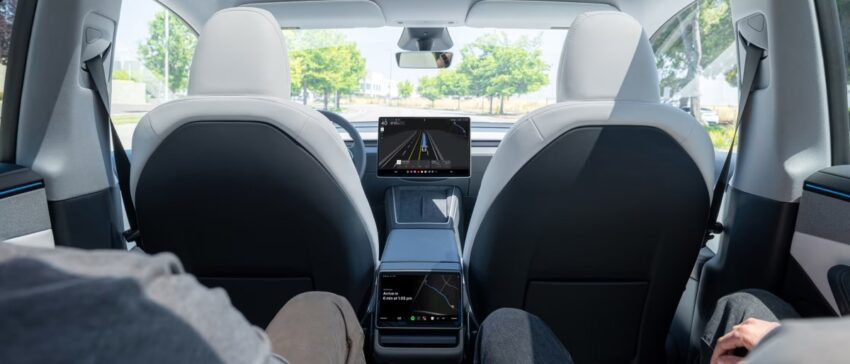
tesla receives ride-hailing permit in arizona in Tesla has secured a ride-hailing permit from Arizona regulators, marking a significant milestone in its plans to launch a robotaxi service in the state.
tesla receives ride-hailing permit in arizona in
Permit Acquisition and Regulatory Approval
This week, Tesla received a Transportation Network Company (TNC) permit from the Arizona Department of Transportation (ADOT), a crucial step that allows the company to start its robotaxi operations. According to a spokesperson from ADOT, Tesla submitted its application for the permit on November 13, 2025. The approval signifies that Tesla has fulfilled all necessary requirements to operate as a ride-hailing service in Arizona.
The permit is particularly noteworthy as it represents the culmination of extensive regulatory scrutiny and compliance checks that Tesla had to navigate. The approval process involved a thorough review of Tesla’s operational plans, safety protocols, and technological capabilities. Arizona has positioned itself as a favorable environment for autonomous vehicle testing and deployment, making it an attractive location for Tesla’s ambitious robotaxi initiative.
Background on Tesla’s Robotaxi Vision
Tesla’s vision for a robotaxi service is rooted in its broader strategy to leverage its advanced autonomous driving technology. The automaker aims to create a fleet of self-driving vehicles that can operate without human intervention, providing on-demand transportation services to consumers. This concept aligns with the growing trend of mobility-as-a-service (MaaS), which seeks to offer flexible transportation options to users while reducing reliance on personal vehicle ownership.
The robotaxi service is expected to utilize Tesla’s Full Self-Driving (FSD) technology, which has been in development for several years. The FSD system is designed to navigate complex urban environments, make real-time decisions, and ensure passenger safety. Tesla’s CEO, Elon Musk, has frequently touted the potential of this technology to revolutionize transportation, claiming that it could lead to significant reductions in traffic accidents and congestion.
Implications of the Permit Approval
The approval of the ride-hailing permit has several implications for Tesla, the autonomous vehicle industry, and the broader transportation landscape.
Market Expansion
With the permit in hand, Tesla can now begin to roll out its robotaxi service in Arizona, which could serve as a testing ground for future expansions into other states and markets. The success of the service in Arizona could pave the way for similar approvals in other jurisdictions, particularly those that are also supportive of autonomous vehicle initiatives.
Competitive Landscape
The entry of Tesla into the ride-hailing market could disrupt existing players such as Uber and Lyft. These companies have dominated the ride-hailing space for years, but Tesla’s unique offering—self-driving vehicles—could attract a significant customer base. The potential for lower operational costs, due to the absence of human drivers, may allow Tesla to offer competitive pricing, further challenging traditional ride-hailing models.
Regulatory Considerations
The approval also highlights the evolving regulatory landscape surrounding autonomous vehicles. As states like Arizona continue to embrace self-driving technology, other regions may follow suit, leading to a patchwork of regulations that could either facilitate or hinder the growth of autonomous services. This regulatory environment will be crucial for Tesla as it seeks to expand its robotaxi service beyond Arizona.
Stakeholder Reactions
The news of Tesla’s permit approval has elicited a range of reactions from stakeholders across the transportation and technology sectors.
Industry Experts
Industry experts have expressed cautious optimism about Tesla’s robotaxi plans. Many believe that the successful implementation of a robotaxi service could validate the capabilities of autonomous driving technology. However, some experts also caution that challenges remain, particularly concerning safety, public acceptance, and regulatory hurdles.
Consumer Sentiment
Consumer sentiment is another critical factor that will influence the success of Tesla’s robotaxi service. While many consumers are intrigued by the idea of self-driving cars, concerns about safety and reliability persist. Tesla will need to address these concerns through effective communication and transparency regarding its safety protocols and technology.
Competitors’ Responses
Competitors in the ride-hailing space are likely to be closely monitoring Tesla’s progress. Companies like Uber and Lyft may need to adapt their business models to remain competitive in a landscape that could soon include autonomous vehicles. This could lead to increased investment in autonomous technology or partnerships with tech firms specializing in self-driving systems.
Technological Considerations
The success of Tesla’s robotaxi service will largely depend on the robustness of its Full Self-Driving technology. Tesla has made significant strides in developing its autonomous driving capabilities, but the technology is not without its challenges.
Safety and Reliability
Safety remains a paramount concern for both regulators and consumers. Tesla’s FSD technology has faced scrutiny over its performance in various driving conditions. Incidents involving Tesla vehicles operating in autonomous mode have raised questions about the reliability of the technology. To gain public trust, Tesla will need to demonstrate that its robotaxi service can operate safely and effectively in diverse environments.
Data and Machine Learning
Another critical aspect of Tesla’s robotaxi service is its reliance on data and machine learning. The performance of autonomous vehicles improves over time as they collect more data from real-world driving experiences. Tesla’s extensive fleet of vehicles on the road provides a unique advantage, allowing the company to gather vast amounts of data that can be used to enhance its FSD technology.
Future Prospects
Looking ahead, the launch of Tesla’s robotaxi service in Arizona could serve as a catalyst for broader adoption of autonomous vehicles. If successful, the service may encourage other automakers and tech companies to invest in similar initiatives, potentially leading to a significant shift in how people view transportation.
Long-Term Vision
Elon Musk has long envisioned a future where autonomous vehicles play a central role in urban mobility. The robotaxi service is just one component of this vision, which also includes the development of electric vehicles, energy solutions, and sustainable transportation systems. As Tesla continues to innovate, the implications of its robotaxi service could extend far beyond ride-hailing, influencing urban planning, infrastructure development, and environmental sustainability.
Potential Challenges Ahead
Despite the optimism surrounding Tesla’s robotaxi service, several challenges remain. Regulatory hurdles, public acceptance, and technological limitations could pose significant obstacles. Additionally, the competitive landscape is likely to evolve rapidly, with new entrants and innovations emerging in the autonomous vehicle space.
Conclusion
The receipt of the ride-hailing permit in Arizona marks a pivotal moment for Tesla as it embarks on its journey to launch a robotaxi service. The implications of this development are far-reaching, affecting not only Tesla but also the broader transportation industry and regulatory landscape. As the company moves forward, its ability to navigate challenges and capitalize on opportunities will determine the success of its ambitious vision for the future of transportation.
Source: Original report
Was this helpful?
Last Modified: November 19, 2025 at 3:39 am
4 views















